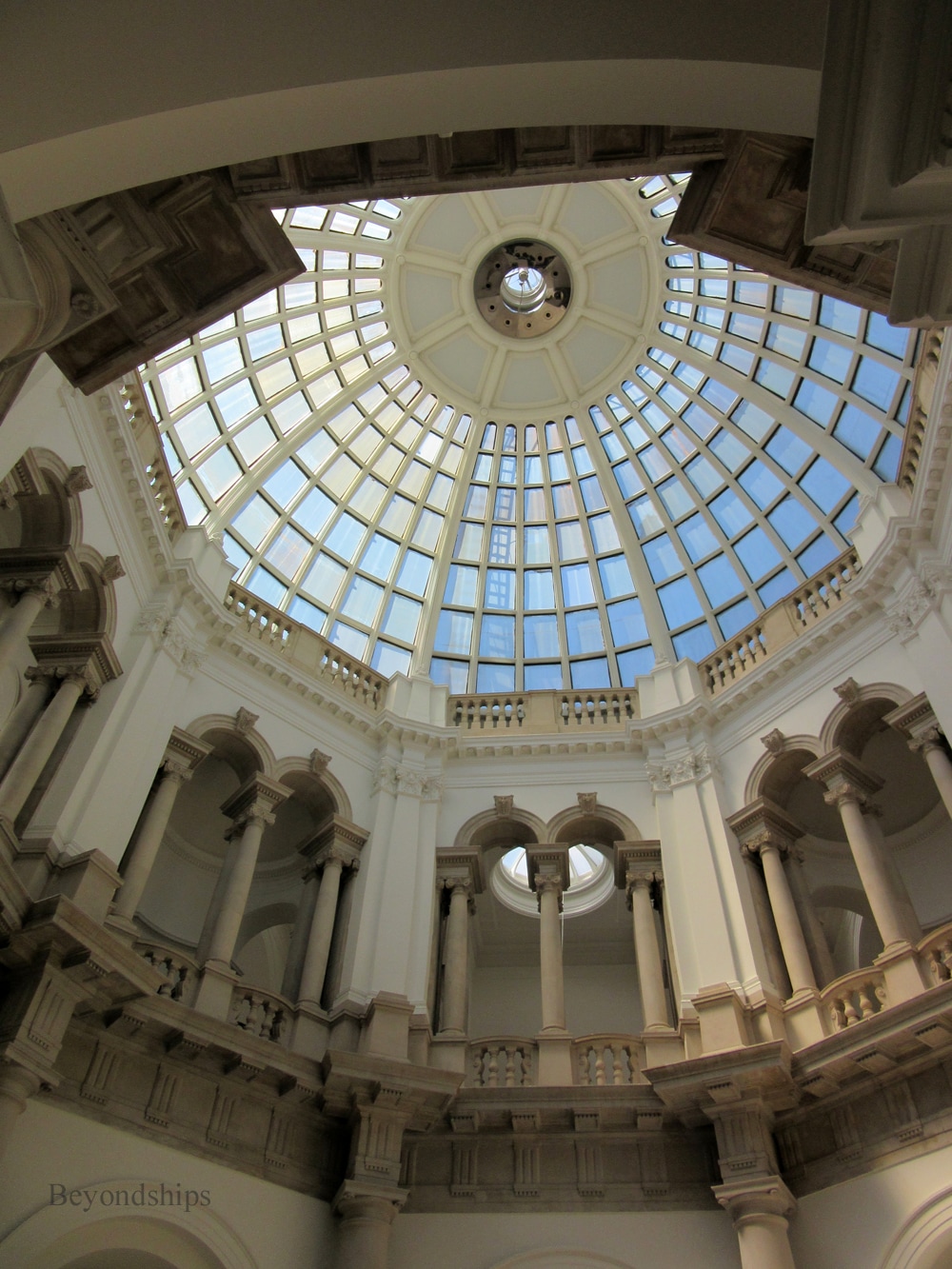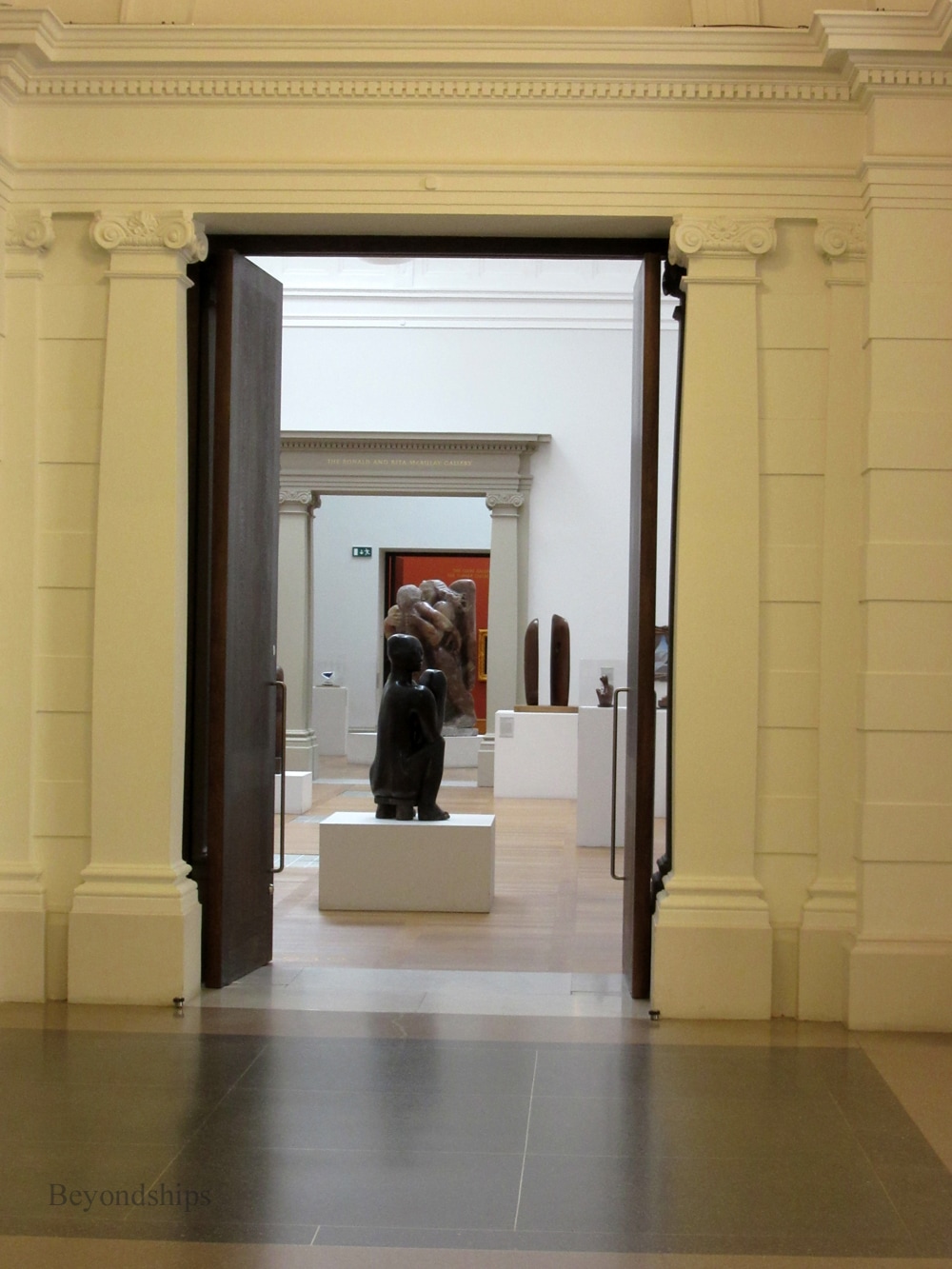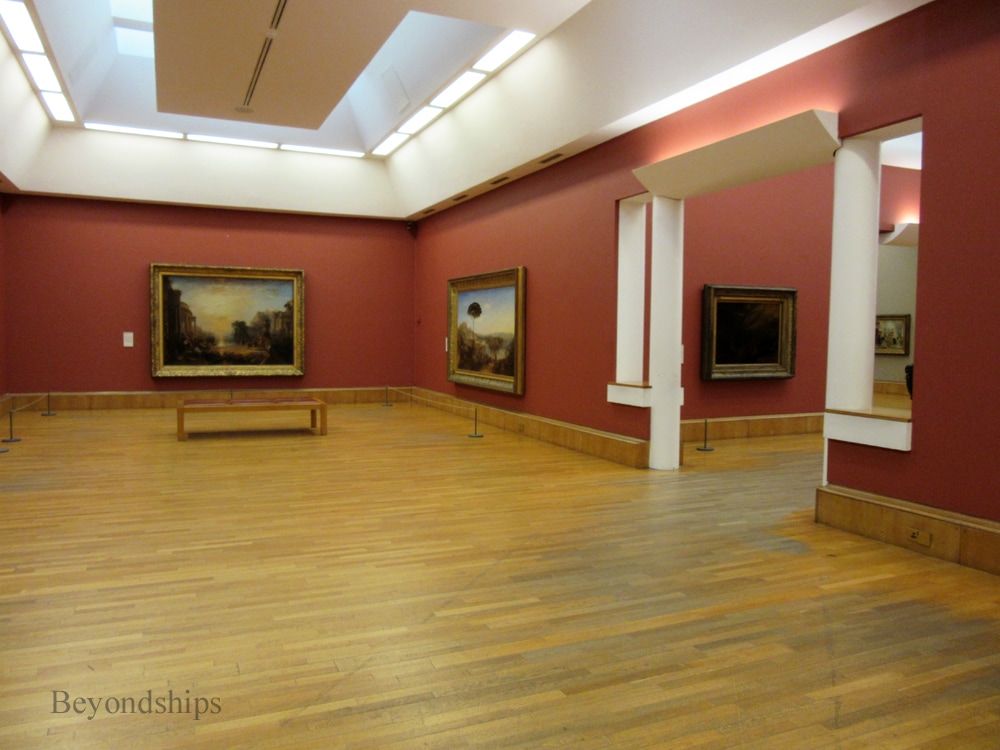|
The Tate Britain looks at British Art from 1500 to the present day. In addition to works by all of the major British artists, the vast collection includes works by other artists with a connection to Britain such as Peter Paul Reuben's sketches for his murals at the Banqueting House and works by American artist James McNeil Whistler who lived in London.
The Tate began life as an annex to the National Gallery. In the late 19th century, Sir Henry Tate offered to donate his considerable collection to the British nation. However, there was insufficient space at the National Gallery to house this donation. Therefore, it was decided to build a new gallery that would be called the National Gallery of British Art for Sir Henry's collection and various other collections that had been donated to the nation. In 1897, a new building was opened on the site of the recently demolished Millbank Penitentiary. Designed by Sidney R.J. Smith, that building remains the core of today's Tate Britain. It has been considerably expanded over the years. From the beginning, the gallery was popularly known as the Tate Gallery. It officially changed its name to the Tate Gallery in 1932. In 2000, the name was changed again to Tate Britain, reflecting the fact that the Tate now encompassed four major sites: the Tate Liverpool, the Tate St. Ives and the Tate Modern as well as the Millbank location. For much of its early existence, the Tate was a part of the National Gallery. However, in 1955, it became independent. Since the beginning, the Tate's focus was on British art and British artists. Of course, this was not an exclusive remit - - the National Gallery also has important works by British artists. Nor was it the Tate's exclusive focus as it built up an extensive collection of modern works by artists from other nations, now housed at the Tate Modern. However, the home of the national collection of British historical and contemporary art is the Tate Britain. The collection includes important works by John Constable, William Blake, David Hockney, Sir Joshua Reynolds, George Stubbs and Thomas Gainsborough. However, the highlight of the collection is the Turner Bequest. Somewhat unusually, J.M.W. Turner was recognized as a great artist in his lifetime. His works ranged from traditional to works that foreshadowed Impressionism and abstraction. In his will, he donated a large number of works to the nation. However, because the paintings were quite valuable, his relatives contested the will when Turner died in 1851. The court eventually decided to give some 300 paintings, 30,000 sketches and 300 sketchbooks to the nation with the reminder of the estate going to his heirs. Over the next half century, the National Gallery tried various ways to display the Turners. However, it did not have the space to exhibit the paintings together as the artist had wanted. Consequently, in 1910, it decided to place most of the Turners in the new annex in Millbank. As a result, most of the Turners in the National Collection are at the Tate Britain. In fact, the Tate Britain has the largest collection of Turners in the world. Even though its Clore Gallery, includes several rooms, there is not enough space to show all the works. Therefore, they are displayed on a changing basis. They include finished works done for exhibition as well as the artist's private, more experimental works. Seeing them together gives a much wider perspective into the artist's mind. In addition to historical works, the Tate Britain devotes considerable space to contemporary British art. Extensively renovated in 2013, the Tate Britain is an up-to-date venue for viewing art. It includes a shop as well as a cafe and a restaurant that contains murals by 20th century artist Rex Whistler. Located in Central London, the Tate Britain is a short, pleasant walk along the Thames from the Houses of Parliament. A high speed boat connects the Tate Britain with the Tate Modern, providing river views of such attractions as the Houses of Parliament and the London Eye. For information on visiting the Tate Britain, see the Tate's website. |
Above: The domed rotunda near the main entrance.
For more information on visiting London, see our London page
Apsley House Bankside Gallery British Museum Courtlauld Gallery Guildhall Gallery Hayward Gallery Institute of Contemporary Arts (ICA) Mall Galleries National Gallery Queen's Gallery Royal Academy of Art Saatchi Gallery Serpentine Galleries Tate Modern Wallace Collection Victoria and Albert Museum |
|
|
|
Places to see art - London, England - Tate Britain


